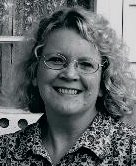Two Compelling Northern Stories
Photos never lie, but the real truth is in the stories.
Today is the eighty-sixth anniverary of the the sinking of the Princess Sophia.
When morning broke on the morning of the 26th of October, nothing but her mast was visible above water. All the passengers and crew had perished--343 in all. One pet dog had managed to swim to shore.
The mysteries remain. Why did Sophia sink? Could the passengers have been rescued if there had been more of a sense of urgency? Some bodies could never be identified, and are buried in unmarked graves in various places, so there's also a little bit unknown regarding the exact identity of the victims of the disaster.
Now, a recent mystery.
This fall, world-renowned bow hunter Bart Schleyer disappeared while out bow hunting for a moose. He was flown in to the largest of the Yukon's Reid Lakes in mid-September, and he wasn't there when the plane returned to pick him up 2 weeks later.
What happened to him and when? Was he really killed by a grizzly or did he die some other way and was just scavenged by the bear? Why weren't there signs of a struggle?
[Update: A link with a few more details. (Not for the squeamish!)
Today is the eighty-sixth anniverary of the the sinking of the Princess Sophia.

Captain F.L. Lockem, of Victoria, a veteran seaman of the northern coast, on the night of the disaster had wirelessed his office here that the ship was hard and fast on the reef with her bottom badly damaged, but she was not taking water and the passengers were normal. It is evident that he believed the Sophia was planted so firmly on the rocks as to be secured from the severity of the storm which continued to rage.

When morning broke on the morning of the 26th of October, nothing but her mast was visible above water. All the passengers and crew had perished--343 in all. One pet dog had managed to swim to shore.
The mysteries remain. Why did Sophia sink? Could the passengers have been rescued if there had been more of a sense of urgency? Some bodies could never be identified, and are buried in unmarked graves in various places, so there's also a little bit unknown regarding the exact identity of the victims of the disaster.
Now, a recent mystery.

This fall, world-renowned bow hunter Bart Schleyer disappeared while out bow hunting for a moose. He was flown in to the largest of the Yukon's Reid Lakes in mid-September, and he wasn't there when the plane returned to pick him up 2 weeks later.
What happened to him and when? Was he really killed by a grizzly or did he die some other way and was just scavenged by the bear? Why weren't there signs of a struggle?
[Update: A link with a few more details. (Not for the squeamish!)
About 60 yards back in the woods from the boat, Schleyer's bow and arrows in a handmade buckskin quiver were leaned up against a tree next to a dry-bag full of gear on which he'd obviously been sitting.
"It still had a cradle in it like he was sitting on it and just got up, like a saddle,'' said David Fritz, a Susitna Valley friend of Schleyer's who has seen photos of the scene taken by the Mounties.
Curtis said the bag was on flat ground adjacent to a thicket of black spruce and willows. To Curtis, an experienced moose hunter, it looked like the sort of place an archer might set up if trying to call a moose into range.
"It was kind of on the edge of it,'' he said. "It was a little more open there. For sure he was calling (moose) from there.''
As the men broadened their search around the bow and the seat, they found a camouflage face mask with blood on it. They decided then it was time to call the Mounties back.
"His face mask had hair and blood on it,'' said Dan Foster, a friend and the Valley taxidermist for whom Schleyer sometimes worked.
On Oct. 3, about a dozen Mounties, Yukon conservation officers and civilian volunteers flew back to the area to begin a grid search. At first, Parker said, they found little but bear and wolf signs -- scat and tracks -- in the area. Then someone spotted a piece of clothing.
"One of our constables saw a ball cap, and that's what tipped them off,'' she said.
Further searching nearby turned up a pair of camouflage pants, a camera, part of a skull and a few bones.
"The bow was standing against a spruce tree,'' Parker said. "From there to where they found the bones, that was about 60 meters away.'']








<< Home